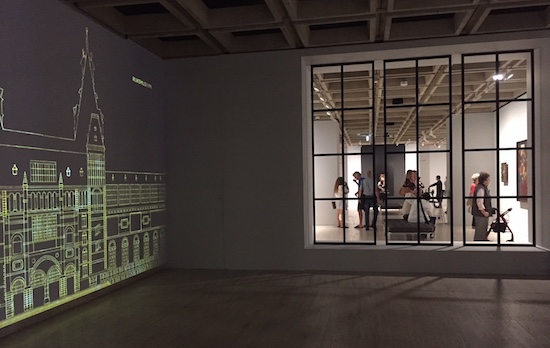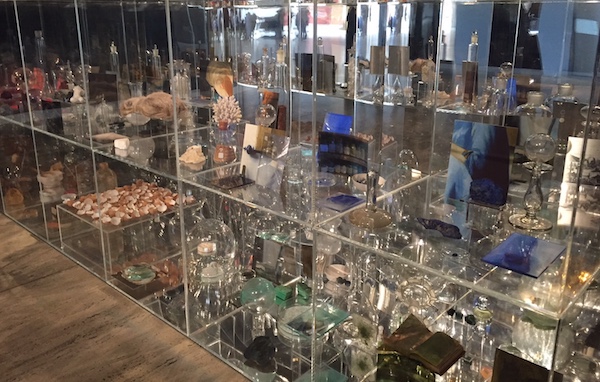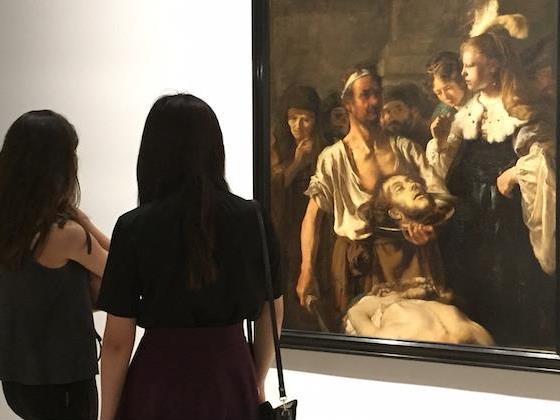Experience the Dutch Golden Age at the AGNSW this summer; Photo ArtsHub
The “Masterpieces Blockbuster” has earned its own category over the years, the opportunity to see the world’s greatest artworks from the world’s leading art museums right here on our doorstep in Australia.
People flock to them, and people are awed by them, as that familiar fridge magnet or postcard becomes real in front of you. In fact, Director of the Art Gallery of NSW (AGNSW) Michael Brand recalled growing up with a reproduction of Pieter de Hooch’s Three women and a man in a yard behind a house c1663-65 in his childhood home.
For others it was Vermeer’s Woman reading a letter or perhaps Ludolf Bakhuizen’s Warships in a heavy storm, or Rembrandt’s Self-portrait as the apostle Paul. Simply, art’s capacity to inspire and become part of our everyday lives is timeless.
This is also the message of the exhibition Rembrandt and the Dutch Golden Age: Masterpieces from the Rijksmuseum, showing at AGNSW until 18 February 2018 as part of Sydney International Art Series.
Curator Peter Raissis explained: ‘Art in the Netherlands was made for a rising middle class and the audience was everyday citizens. It wasn’t a courtly culture or dominated by the Catholic Church. Because of this situation of tolerance and intellectual freedoms, the artists were really able to innovate – in developing new types of subject matter.’
That spirit of freshness comes across in the way this exhibition has been hung, and in turn experienced. So often with an exhibition of this type the visitor is confronted with a rather static experience – portraits staring out from wine-coloured walls suffocating in their heavy frames – the only movement is that of the nudge from the next person to move on and clear the space.
Raissis has created an elegant and layered viewing experience, working with architect / exhibition designer Richard Johnson to create a space inspired by the interiors of Rijksmuseum. A palette of soft greys to polished black calms the space and oddly makes it feel more democratic, and in an exciting move, the gallery walls have been perforated with window-like structures that allow the visitor to experience sight lines between rooms and halls full of art, not unlike strolling the corridors of a grand palace.

Exhibition design for Rembrandt and the Dutch Golden Age at AGNSW; Photo ArtsHub
It is incredibly successful in removing that claustrophobic clutter that often comes with a Masterpiece Blockbuster. It also seems to dilute the pace and push through; viewing the exhibition I felt I could linger as long as I liked and yet there was still an excited energy among those in the gallery.
Johnson designed AGNSW’s Asian galleries in 2003 and developed spaces for The Greats: masterpieces from the National Galleries of Scotland at the Gallery in 2015/16.
What will you see?
The exhibition offers a very clear journey through the various themes of the day; themes which defined an era that could be thought of as revolutionary, innovative and democratic. These are not the gongs we usually assign to old masters.
One of the lovely pairings across the exhibition is a suite of maritime paintings with a huge model of a ship, a 44 gun Dutch warship (1648) and the oldest model in the Rijksmeuseum’s collection. It is set against Bakhuizen’s Warship in a heavy storm c1695 in a message of power, strength and determination despite nature’s force.

Installation view AGNSW’s Dutch Golden Age exhibition; photo Artshub
On another wall is Aelbert Cuyp’s portrait, A senior merchant of the Dutch East India Company and his wife, in the background the fleet in the roads of Batavia (1640-60). A Javanese servant holds a parasol over them, while he gestures with great pomp toward the harbor and his possessions. It is a modern world; one the Dutch are proud of to this day.
Dutch culture of the 17th was centered around trade, and from clothing to merchants to still life paintings that rounded out this picture of the Golden Age, this exhibition tells us so much about history and society that it is almost palpable.

There are eight galleries that visitors move through with a total of 78 loans that make for an incredible holding of works from this period.
But it is perhaps one of the smallest paintings among them that is the gem, attracting a cluster of viewers. Vermeer’s Woman reading a letter is one of the great paintings of Dutch art – it is remarkable that the Rijksmuseum has allowed it to travel.
It hangs alone and in a bit of a thoroughfare, so that without the cluster it could be missed, and yet its position is perfect for its sight lines that seeming stitch together all the touch points of the Golden Age. It is the heart of this exhibition.
I love that an echo of that is explored upstairs in an installation by Sydney artist Janet Laurence, The Matter of the Masters (don’t miss it when you visit) – a beautiful expression of details and pigments including the iconic blue of Vermeer’s portrait. It highlights the minerals and stones used for creating the colours in these remarkable Dutch masters and was inspired by conservation research undertaken at the Rijksmuseum – a very nice move on behalf of AGNSW to pair these showings.

Detail of Janet Laurence’s installation The Matter of the Masters; Photo ArtsHub
The downstairs gallery – the gallery that is so often reserved for the annual Archibald Prize winner – has been turned over exclusively to the work of Rembrandt. He peers out at you from every wall. It is slightly haunting and most definitely hallowed.
Accompanying the range of paintings from across his career are a selection of some of Rembrandt’s best-known etchings. For this writer, however, it was the last gallery of luscious, lyrical, and simply exquisite still life paintings that best captured the magic of this era.
While a cynic might suggest they perfectly prime one for the gift shop, it is hard to direct any criticism here. These paintings jump off the walls with life in full “technicolour”. They are an expression of life and death, totally unbounded.

Jan Davidsz de Heem, Still life with flowers in a glass vase, 1665– 70 oil on copper, 54.5 x 36.5 cm Rijksmuseum, on loan from the City of Amsterdam (A van der Hoop Bequest)
It is an interesting display when you consider the cost of the flowers in some of these still life paintings in their day would have accounted for more than the cost of the painting itself. Raissis explained: ‘Most of these blooms were new at the time. And they took the still life to new heights. Their flowers arranged together were highly contrived, that is they don’t bloom at the same time.’
There is something in that message that is heartening; that one can shape a picture of a new age and then with time, it becomes as familiar to the masses as breathing itself.
Yes these works are incredibly rare, and to have this volume of them in Sydney is a remarkable treat for Australian audiences, but the wow for me is not their catchphrase of celebrity – rather it is art’s capacity to transform our everyday lives.
Rating 4 ½ stars out of 5
Rembrandt and the Dutch golden age: masterpieces from the Rijksmuseum
11 November 2017 – 18 February 2018
Art Gallery of NSW
Domain Road, Sydney





